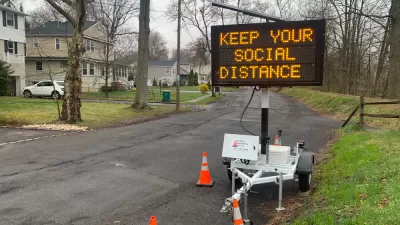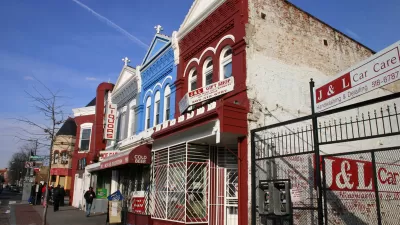In the ongoing and contentious debate about whether market-rate development is a cure or a disease, another writer comes down on the side of more supply, no matter the cost.

Noah Smith takes a position in the debates surrounding supply and demand in the housing market of desirable urban areas. His position: the cure for costly housing is more costly housing.
Acknowledging that the standard argument of supply vs. demand is complicated by the concept of induced demand, Smith still endeavors to defeat the chosen belief of "progressives." As he describes it: that market-rate housing raises rents and that only government can set an affordable price for housing.
Faced with two competing theories -- the basic Econ 101 theory of supply and demand versus the theory of induced demand -- we have to turn to the evidence. It’s well known [pdf] that urban land has been getting more expensive, but how would denser development change the picture?
Smith calls on studies by Lawrence Katz and Kenneth Rosen from 1987 and Edward Glaeser, Joseph Gyourko, and Raven Saks from 2005 to bolster the pro-supply and demand argument. Smith also calls on more recent research by Eric Fischer, who collected more than 30 years of data on San Francisco rents for a recent study. "He modeled them as a function of supply -- based on the number of available housing units -- and demand, measured by total employment and average wages," explains Smith. "His model fit the historical curve quite nicely."
FULL STORY: The Cure for Costly Housing Is More Costly Housing

Alabama: Trump Terminates Settlements for Black Communities Harmed By Raw Sewage
Trump deemed the landmark civil rights agreement “illegal DEI and environmental justice policy.”

Planetizen Federal Action Tracker
A weekly monitor of how Trump’s orders and actions are impacting planners and planning in America.

How Atlanta Built 7,000 Housing Units in 3 Years
The city’s comprehensive, neighborhood-focused housing strategy focuses on identifying properties and land that can be repurposed for housing and encouraging development in underserved neighborhoods.

In Both Crashes and Crime, Public Transportation is Far Safer than Driving
Contrary to popular assumptions, public transportation has far lower crash and crime rates than automobile travel. For safer communities, improve and encourage transit travel.

Report: Zoning Reforms Should Complement Nashville’s Ambitious Transit Plan
Without reform, restrictive zoning codes will limit the impact of the city’s planned transit expansion and could exclude some of the residents who depend on transit the most.

Judge Orders Release of Frozen IRA, IIJA Funding
The decision is a victory for environmental groups who charged that freezing funds for critical infrastructure and disaster response programs caused “real and irreparable harm” to communities.
Urban Design for Planners 1: Software Tools
This six-course series explores essential urban design concepts using open source software and equips planners with the tools they need to participate fully in the urban design process.
Planning for Universal Design
Learn the tools for implementing Universal Design in planning regulations.
Caltrans
Smith Gee Studio
Institute for Housing and Urban Development Studies (IHS)
City of Grandview
Harvard GSD Executive Education
Toledo-Lucas County Plan Commissions
Salt Lake City
NYU Wagner Graduate School of Public Service





























